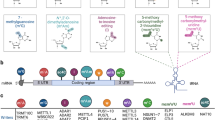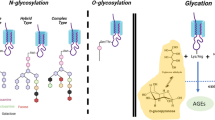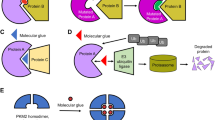Abstract
Peptidylarginine deiminases (PADs) catalyze deimination, converting arginyl to citrullyl residues. Only three PAD isotypes are detected in the epidermis where they play a crucial role, targeting filaggrin, a key actor for the tissue hydration and barrier functions. Their expression and activation depends on the keratinocyte differentiation state. To investigate this regulation, we used primary keratinocytes induced to differentiate either by increasing cell-density or by treatment with vitamin D. High cell-density increased PAD1 and 3, but not PAD2, at the mRNA and protein levels, and up-regulated protein deimination. By contrast, vitamin D increased PAD1–3 mRNA amounts, with distinct kinetics, but neither the proteins nor the deimination rate. Furthermore, auto-deimination was shown to decrease PAD activity, increasing the distances between the four major amino acids of the active site. In summary, deimination can be regulated at multiple levels: transcription of the PADI genes, translation of the corresponding mRNAs, and auto-deimination of PADs.





Similar content being viewed by others
References
Méchin MC, Sebbag M, Arnaud J, Nachat R, Foulquier C, Adoue V, Coudane F, Duplan H, Schmitt AM, Chavanas S, Guerrin M, Serre G, Simon M (2007) Update on peptidylarginine deiminases and deimination in skin physiology and severe human diseases. Int J Cosmet Sci 29:147–168
Sebbag M, Chapuy-Regaud S, Auger I, Petit-Texeira E, Clavel C, Nogueira L, Vincent C, Cornelis F, Roudier J, Serre G (2004) Clinical and pathophysiological significance of the autoimmune response to citrullinated proteins in rheumatoid arthritis. Joint Bone Spine 71:493–502
Harauz G, Musse AA (2007) A tale of two citrullines—structural and functional aspects of myelin basic protein deimination in health and disease. Neurochem Res 32:137–158
Jones JE, Causey CP, Knuckley B, Slack-Noyes JL, Thompson PR (2009) Protein arginine deiminase 4 (PAD4): current understanding and future therapeutic potential. Curr Opin Drug Discov Devel 12:616–627
Senshu T, Kan S, Ogawa H, Manabe M, Asaga H (1996) Preferential deimination of keratin K1 and filaggrin during the terminal differentiation of human epidermis. Biochem Biophys Res Commun 225:712–719
Rogers GE, Taylor LD (1977) The enzymic derivation of citrulline residues from arginine residues in situ during the biosynthesis of hair proteins that are cross-linked by isopeptide bonds. Adv Exp Med Biol 86A:283–294
Tarcsa E, Marekov LN, Andreoli J, Idler WW, Candi E, Chung SI, Steinert PM (1997) The fate of trichohyalin. Sequential post-translational modifications by peptidyl-arginine deiminase and transglutaminases. J Biol Chem 272:27893–27901
Tarcsa E, Marekov LN, Mei G, Melino G, Lee SC, Steinert PM (1996) Protein unfolding by peptidylarginine deiminase. Substrate specificity and structural relationships of the natural substrates trichohyalin and filaggrin. J Biol Chem 271:30709–30716
Kizawa K, Takahara H, Troxler H, Kleinert P, Mochida U, Heizmann CW (2008) Specific citrullination causes assembly of a globular S100A3 homotetramer: a putative Ca2+ modulator matures human hair cuticle. J Biol Chem 283:5004–5013
Rawlings AV, Harding CR (2004) Moisturization and skin barrier function. Dermatol Ther 17(Suppl 1):43–48
Smith FJ, Irvine AD, Terron-Kwiatkowski A, Sandilands A, Campbell LE, Zhao Y, Liao H, Evans AT, Goudie DR, Lewis-Jones S, Arseculeratne G, Munro CS, Sergeant A, O’Regan G, Bale SJ, Compton JG, DiGiovanna JJ, Presland RB, Fleckman P, McLean WH (2006) Loss-of-function mutations in the gene encoding filaggrin cause ichthyosis vulgaris. Nat Genet 38:337–342
Palmer CN, Irvine AD, Terron-Kwiatkowski A, Zhao Y, Liao H, Lee SP, Goudie DR, Sandilands A, Campbell LE, Smith FJ, O’Regan GM, Watson RM, Cecil JE, Bale SJ, Compton JG, DiGiovanna JJ, Fleckman P, Lewis-Jones S, Arseculeratne G, Sergeant A, Munro CS, El Houate B, McElreavey K, Halkjaer LB, Bisgaard H, Mukhopadhyay S, McLean WH (2006) Common loss-of-function variants of the epidermal barrier protein filaggrin are a major predisposing factor for atopic dermatitis. Nat Genet 38:441–446
McGrath JA (2008) Filaggrin and the great epidermal barrier grief. Australas J Dermatol 49:67–73 quiz 73-4
Howell MD, Fairchild HR, Kim BE, Bin L, Boguniewicz M, Redzic JS, Hansen KC, Leung DY (2008) Th2 cytokines act on S100/A11 to downregulate keratinocyte differentiation. J Investig Dermatol 128:2248–2258
Howell MD, Kim BE, Gao P, Grant AV, Boguniewicz M, Debenedetto A, Schneider L, Beck LA, Barnes KC, Leung DY (2007) Cytokine modulation of atopic dermatitis filaggrin skin expression. J Allergy Clin Immunol 120:150–155
Kamata Y, Taniguchi A, Yamamoto M, Nomura J, Ishihara K, Takahara H, Hibino T, Takeda A (2009) Neutral cysteine protease bleomycin hydrolase is essential for the breakdown of deiminated filaggrin into amino acids. J Biol Chem 284:12829–12836
Ishida-Yamamoto A, Senshu T, Eady RA, Takahashi H, Shimizu H, Akiyama M, Iizuka H (2002) Sequential reorganization of cornified cell keratin filaments involving filaggrin-mediated compaction and keratin 1 deimination. J Investig Dermatol 118:282–287
Ishida-Yamamoto A, Senshu T, Takahashi H, Akiyama K, Nomura K, Iizuka H (2000) Decreased deiminated keratin K1 in psoriatic hyperproliferative epidermis. J Investig Dermatol 114:701–705
Chavanas S, Méchin MC, Takahara H, Kawada A, Nachat R, Serre G, Simon M (2004) Comparative analysis of the mouse and human peptidylarginine deiminase gene clusters reveals highly conserved non-coding segments and a new human gene, PADI6. Gene 330:19–27
Guerrin M, Ishigami A, Méchin MC, Nachat R, Valmary S, Sebbag M, Simon M, Senshu T, Serre G (2003) cDNA cloning, gene organization and expression analysis of human peptidylarginine deiminase type I. Biochem J 370:167–174
Nachat R, Méchin MC, Charveron M, Serre G, Constans J, Simon M (2005) Peptidylarginine deiminase isoforms are differentially expressed in the anagen hair follicles and other human skin appendages. J Investig Dermatol 125:34–41
Nachat R, Méchin MC, Takahara H, Chavanas S, Charveron M, Serre G, Simon M (2005) Peptidylarginine deiminase isoforms 1–3 are expressed in the epidermis and involved in the deimination of K1 and filaggrin. J Investig Dermatol 124:384–393
Méchin MC, Enji M, Nachat R, Chavanas S, Charveron M, Ishida-Yamamoto A, Serre G, Takahara H, Simon M (2005) The peptidylarginine deiminases expressed in human epidermis differ in their substrate specificities and subcellular locations. Cell Mol Life Sci 62:1984–1995
Dong S, Kanno T, Yamaki A, Kojima T, Shiraiwa M, Kawada A, Méchin MC, Chavanas S, Serre G, Simon M, Takahara H (2006) NF-Y and Sp1/Sp3 are involved in the transcriptional regulation of the peptidylarginine deiminase type III gene (PADI3) in human keratinocytes. Biochem J 397:449–459
Dong S, Kojima T, Shiraiwa M, Méchin MC, Chavanas S, Serre G, Simon M, Kawada A, Takahara H (2005) Regulation of the expression of peptidylarginine deiminase type II gene (PADI2) in human keratinocytes involves Sp1 and Sp3 transcription factors. J Investig Dermatol 124:1026–1033
Dong S, Ying S, Kojima T, Shiraiwa M, Kawada A, Méchin MC, Adoue V, Chavanas S, Serre G, Simon M, Takahara H (2008) Crucial roles of MZF1 and Sp1 in the transcriptional regulation of the peptidylarginine deiminase type I gene (PADI1) in human keratinocytes. J Investig Dermatol 128:549–557
Chavanas S, Adoue V, Méchin MC, Ying S, Dong S, Duplan H, Charveron M, Takahara H, Serre G, Simon M (2008) Long-range enhancer associated with chromatin looping allows AP-1 regulation of the peptidylarginine deiminase 3 gene in differentiated keratinocyte. PLoS ONE 3:e3408. doi:10.1371/journal.pone.0003408
Adoue V, Chavanas S, Coudane F, Méchin MC, Caubet C, Ying S, Dong S, Duplan H, Charveron M, Takahara H, Serre G, Simon M (2008) Long-range enhancer differentially regulated by c-Jun and JunD controls peptidylarginine deiminase-3 gene in keratinocytes. J Mol Biol 384:1048–1057
Ying S, Dong S, Kawada A, Kojima T, Chavanas S, Méchin MC, Adoue V, Serre G, Simon M, Takahara H (2009) Transcriptional regulation of peptidylarginine deiminase expression in human keratinocytes. J Dermatol Sci 53:2–9
Hosomi J, Hosoi J, Abe E, Suda T, Kuroki T (1983) Regulation of terminal differentiation of cultured mouse epidermal cells by 1 alpha, 25-dihydroxyvitamin D3. Endocrinology 113:1950–1957
Bikle DD, Oda Y, Xie Z (2004) Calcium and 1, 25(OH)2D: interacting drivers of epidermal differentiation. J Steroid Biochem Mol Biol 89–90:355–360
Bikle DD, Pillai S (1993) Vitamin D, calcium, and epidermal differentiation. Endocr Rev 14:3–19
Reichrath J (2007) Vitamin D and the skin: an ancient friend, revisited. Exp Dermatol 16:618–625
Reichrath J, Lehmann B, Carlberg C, Varani J, Zouboulis CC (2007) Vitamins as hormones. Horm Metab Res 39:71–84
Poumay Y, Herphelin F, Smits P, De Potter IY, Pittelkow MR (1999) High-cell-density phorbol ester and retinoic acid upregulate involucrin and downregulate suprabasal keratin 10 in autocrine cultures of human epidermal keratinocytes. Mol Cell Biol Res Commun 2:138–144
Poumay Y, Pittelkow MR (1995) Cell density and culture factors regulate keratinocyte commitment to differentiation and expression of suprabasal K1/K10 keratins. J Investig Dermatol 104:271–276
Nilsson JA, Hedberg JJ, Vondracek M, Staab CA, Hansson A, Hoog JO, Grafstrom RC (2004) Alcohol dehydrogenase 3 transcription associates with proliferation of human oral keratinocytes. Cell Mol Life Sci 61:610–617
Vossenaar ER, Radstake TR, van der Heijden A, van Mansum MA, Dieteren C, de Rooij DJ, Barrera P, Zendman AJ, van Venrooij WJ (2004) Expression and activity of citrullinating peptidylarginine deiminase enzymes in monocytes and macrophages. Ann Rheum Dis 63:373–381
Suzuki A, Yamada R, Chang X, Tokuhiro S, Sawada T, Suzuki M, Nagasaki M, Nakayama-Hamada M, Kawaida R, Ono M, Ohtsuki M, Furukawa H, Yoshino S, Yukioka M, Tohma S, Matsubara T, Wakitani S, Teshima R, Nishioka Y, Sekine A, Iida A, Takahashi A, Tsunoda T, Nakamura Y, Yamamoto K (2003) Functional haplotypes of PADI4, encoding citrullinating enzyme peptidylarginine deiminase 4, are associated with rheumatoid arthritis. Nat Genet 34:395–402
Rheinwald JG, Green H (1975) Serial cultivation of strains of human epidermal keratinocytes: the formation of keratinizing colonies from single cells. Cell 6:331–343
Sarafian V, Jans R, Poumay Y (2006) Expression of lysosome-associated membrane protein 1 (Lamp-1) and galectins in human keratinocytes is regulated by differentiation. Arch Dermatol Res 298(2):73–81
Foulquier C, Sebbag M, Clavel C, Chapuy-Regaud S, Al Badine R, Méchin MC, Vincent C, Nachat R, Yamada M, Takahara H, Simon M, Guerrin M, Serre G (2007) Peptidyl arginine deiminase type 2 (PAD-2) and PAD-4 but not PAD-1, PAD-3, and PAD-6 are expressed in rheumatoid arthritis synovium in close association with tissue inflammation. Arthritis Rheum 56:3541–3553
Wright PW, Bolling LC, Calvert ME, Sarmento OF, Berkeley EV, Shea MC, Hao Z, Jayes FC, Bush LA, Shetty J, Shore AN, Reddi PP, Tung KS, Samy E, Allietta MM, Sherman NE, Herr JC, Coonrod SA (2003) ePAD, an oocyte and early embryo-abundant peptidylarginine deiminase-like protein that localizes to egg cytoplasmic sheets. Dev Biol 256:73–88
Senshu T, Akiyama K, Kan S, Asaga H, Ishigami A, Manabe M (1995) Detection of deiminated proteins in rat skin: probing with a monospecific antibody after modification of citrulline residues. J Investig Dermatol 105:163–169
Shimada N, Handa S, Uchida Y, Fukuda M, Maruyama N, Asaga H, Choi EK, Lee J, Ishigami A (2009) Developmental and age-related changes of peptidylarginine deiminase 2 in the mouse brain. J Neurosci Res. doi:10.1002/jnr.22255
Nakashima K, Hagiwara T, Ishigami A, Nagata S, Asaga H, Kuramoto M, Senshu T, Yamada M (1999) Molecular characterization of peptidylarginine deiminase in HL-60 cells induced by retinoic acid and 1alpha, 25-dihydroxyvitamin D(3). J Biol Chem 274:27786–27792
Kanno T, Kawada A, Yamanouchi J, Yosida-Noro C, Yoshiki A, Shiraiwa M, Kusakabe M, Manabe M, Tezuka T, Takahara H (2000) Human peptidylarginine deiminase type III: molecular cloning and nucleotide sequence of the cDNA, properties of the recombinant enzyme, and immunohistochemical localization in human skin. J Investig Dermatol 115:813–823
Girbal-Neuhauser E, Durieux JJ, Arnaud M, Dalbon P, Sebbag M, Vincent C, Simon M, Senshu T, Masson-Bessière C, Jolivet-Reynaud C, Jolivet M, Serre G (1999) The epitopes targeted by the rheumatoid arthritis-associated antifilaggrin autoantibodies are posttranslationally generated on various sites of (pro)filaggrin by deimination of arginine residues. J Immunol 162:585–594
Rozen S, Skaletsky H (2000) Primer3 on the WWW for general users and for biologist programmers. Methods Mol Biol 132:365–386
Vandesompele J, De Preter K, Pattyn F, Poppe B, Van Roy N, De Paepe A, Speleman F (2002) Accurate normalization of real-time quantitative RT-PCR data by geometric averaging of multiple internal control genes. Genome Biol 3. RESEARCH0034
Arita K, Hashimoto H, Shimizu T, Nakashima K, Yamada M, Sato M (2004) Structural basis for Ca(2+)-induced activation of human PAD4. Nat Struct Mol Biol 11:777–783
Douguet D, Labesse G (2001) Easier threading through web-based comparisons and cross-validations. Bioinformatics 17:752–753
Guex N, Peitsch MC (1997) Swiss-model and the Swiss-Pdb viewer: an environment for comparative protein modeling. Electrophoresis 18:2714–2723
Dove KL, Summer JS (1992) Tetrahedra with integer edges and interger volume. Math Mag 65:104–111
Bikle DD, Chang S, Crumrine D, Elalieh H, Man MQ, Dardenne O, Xie Z, Arnaud RS, Feingold K, Elias PM (2004) Mice lacking 25OHD 1alpha-hydroxylase demonstrate decreased epidermal differentiation and barrier function. J Steroid Biochem Mol Biol 89–90:347–353
Lu J, Goldstein KM, Chen P, Huang S, Gelbert LM, Nagpal S (2005) Transcriptional profiling of keratinocytes reveals a vitamin D-regulated epidermal differentiation network. J Investig Dermatol 124:778–785
Palmer HG, Anjos-Afonso F, Carmeliet G, Takeda H, Watt FM (2008) The vitamin D receptor is a Wnt effector that controls hair follicle differentiation and specifies tumor type in adult epidermis. PLoS ONE 3:e1483. doi:10.1371/journal.pone.0001483
Chang X, Han J (2006) Expression of peptidylarginine deiminase type 4 (PAD4) in various tumors. Mol Carcinog 45:183–196
Liu GY, Liao YF, Chang WH, Liu CC, Hsieh MC, Hsu PC, Tsay GJ, Hung HC (2006) Overexpression of peptidylarginine deiminase IV features in apoptosis of haematopoietic cells. Apoptosis 11:183–196
Yao H, Li P, Venters BJ, Zheng S, Thompson PR, Pugh BF, Wang Y (2008) Histone Arg modifications and p53 regulate the expression of OKL38, a mediator of apoptosis. J Biol Chem 283:20060–20068
de Benedictis FM, Franceschini F, Hill D, Naspitz C, Simons FE, Wahn U, Warner JO, de Longueville M (2009) The allergic sensitization in infants with atopic eczema from different countries. Allergy 64:295–303
Acknowledgments
We thank C. Pons for her excellent technical assistance, the staff of the “Laboratoire de Biologie Cellulaire Cutanée du CERPER”, especially I. Cerutti, M. J. Haure and S. Julié, for their technical advice, the sequencing and genotyping facility of the IFR150 at Toulouse-Purpan, particularly C. Offer and H. Brun for their precious high efficiency, and the histological facility at Toulouse-Purpan, especially F. Capilla for her technical advice. We are indebted to Dr A Ishigami (Chiba, Japan) for the anti-PAD2 antibody and to Drs H Palmer and G. Carmeliet (Cancer Research UK Cambridge Research Institute, Cambridge, UK) for providing us with skin sections of VDR-null mice and control littermates. We would also particularly like to thank N. Mattiuzzo for his technical bio-informatics suggestions for performing VDRE sequences analysis, and Drs M. Sebbag and C.-Y. Hsu for their advice and helpful discussions. This work was supported by grants from the “Centre National de la Recherche Scientifique” (CNRS), the “Société Française de Dermatologie” and the “Centre Européen de Recherche sur la Peau et les Epithéliums de Revêtement” (CERPER, Toulouse, France) and by the “Institut National de la Santé et de la Recherche Médicale” (INSERM).
Author information
Authors and Affiliations
Corresponding author
Electronic supplementary material
Below is the link to the electronic supplementary material.
Rights and permissions
About this article
Cite this article
Méchin, MC., Coudane, F., Adoue, V. et al. Deimination is regulated at multiple levels including auto-deimination of peptidylarginine deiminases. Cell. Mol. Life Sci. 67, 1491–1503 (2010). https://doi.org/10.1007/s00018-010-0262-5
Received:
Revised:
Accepted:
Published:
Issue Date:
DOI: https://doi.org/10.1007/s00018-010-0262-5




